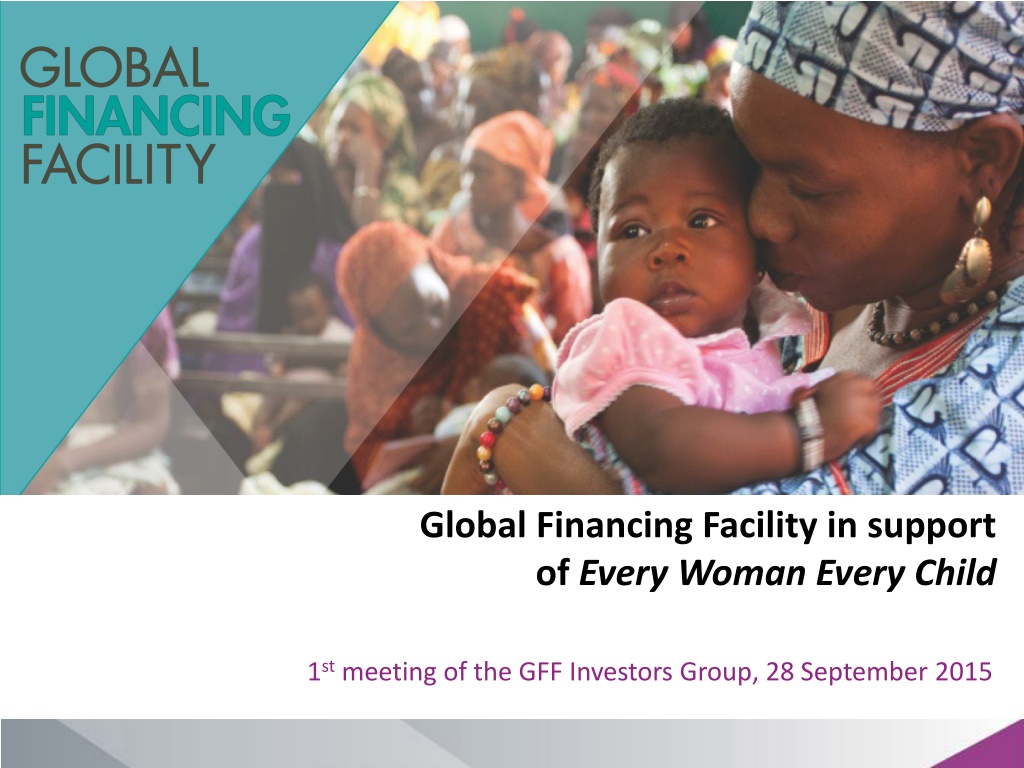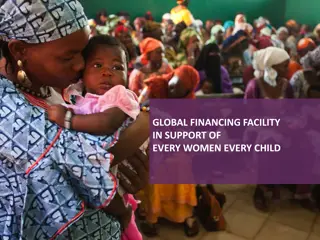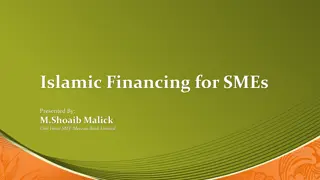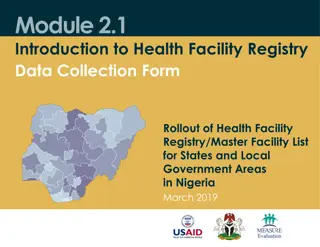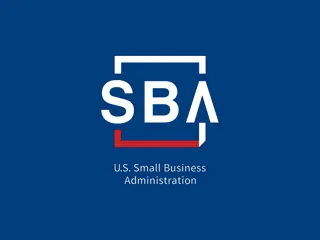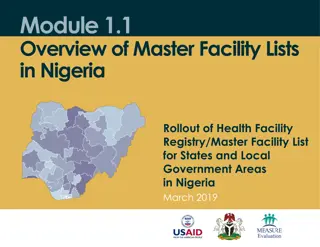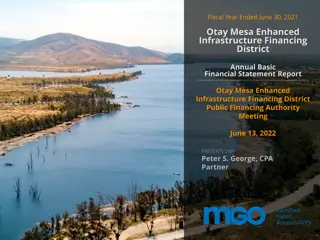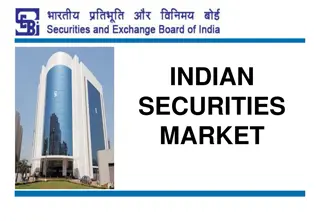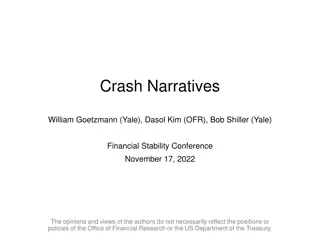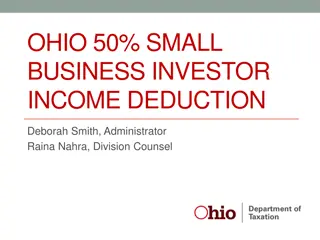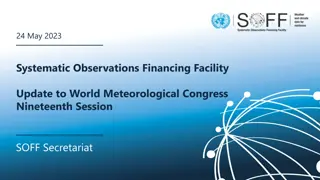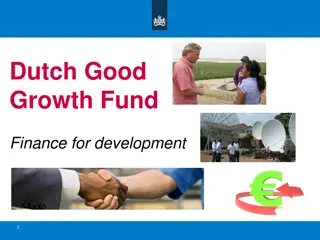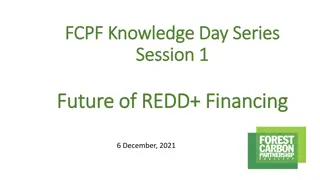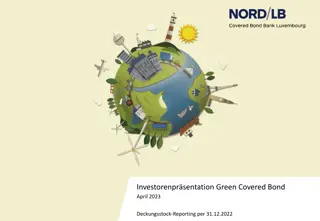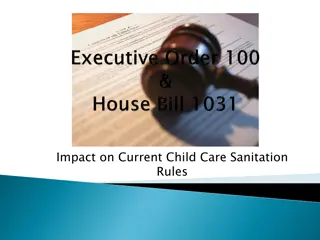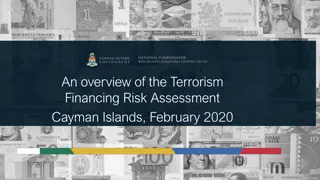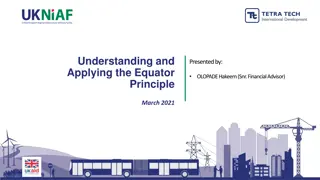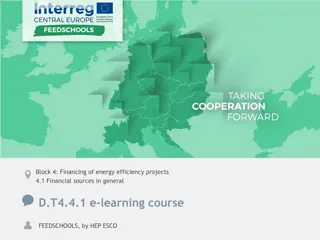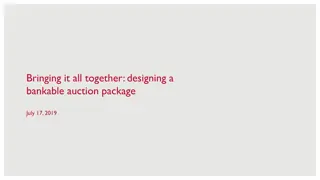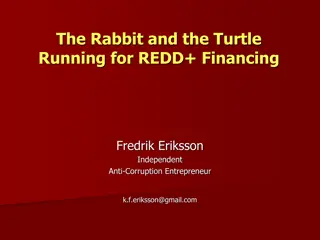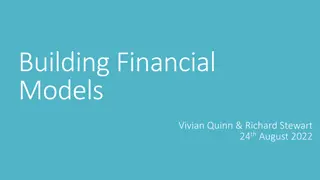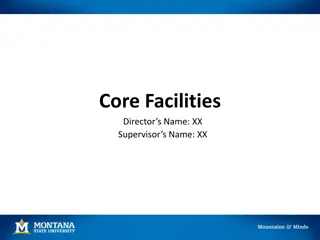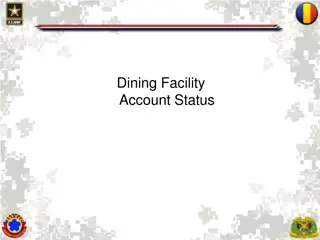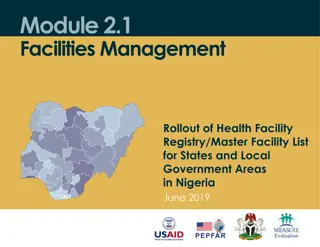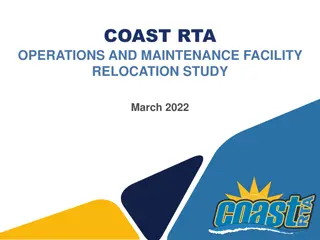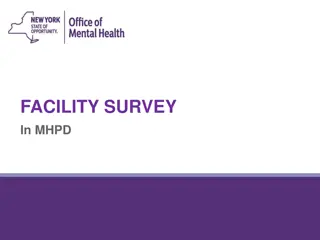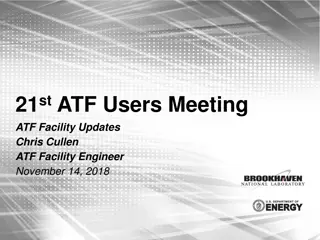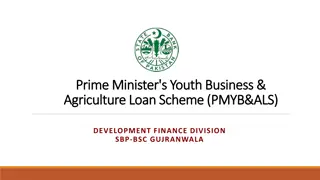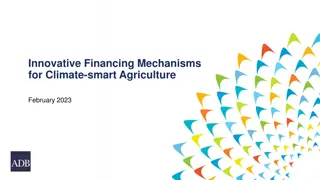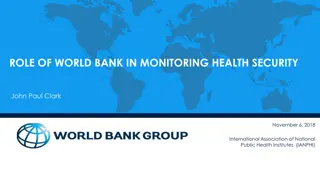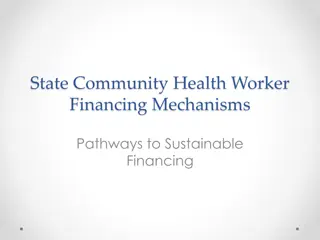Global Financing Facility in Support of Every Woman Every Child Investor Group Meeting 2015
The 1st meeting of the GFF Investors Group in 2015 focused on operations review, coordination challenges, country updates, health financing progress, and tools for communication and coordination in support of women and children's health. The meeting discussed investment cases, health financing strategies, and shared online folders for country teams and partners to collaborate effectively.
Download Presentation

Please find below an Image/Link to download the presentation.
The content on the website is provided AS IS for your information and personal use only. It may not be sold, licensed, or shared on other websites without obtaining consent from the author. Download presentation by click this link. If you encounter any issues during the download, it is possible that the publisher has removed the file from their server.
E N D
Presentation Transcript
Global Financing Facility in support of Every Woman Every Child 1stmeeting of the GFF Investors Group, 28 September 2015
Agenda Introduction Investors Group Operations Review of Terms of Reference Selection of Investors Group Chair Communication and coordination Country Focus Front runner: Kenya Country status updates Monitoring Progress toward Sustainable Health Financing Technical Working Group Updates Quality Assurance Technical Assistance Summary of decisions and Annual Calendar 2
Global Financing Facility in support of Every Woman Every Child Communication and Coordination 1st meeting of the GFF Investors Group, 28 September 2015
Communication and coordination challenges: Communication/coordination between partners Communication with countries on behalf of GFF Communication between global HQ and country level staff Communication/coordination with stakeholders not involved in deliberations 4
Global Financing Facility in support of Every Woman Every Child GFF/IG1/4: Country Update Tool 1st meeting of the GFF Investors Group, 28 September 2015
GFF country update tool Online folders with shared editing access for country teams and partners Includes Investment Cases and health financing strategies (where available) a link will be provided Standard information for all countries: Investment Case: Timeline Process (including participants) Content (situation analysis, key programmatic areas, key equity considerations, CRVS and multi-sectoral elements, key expected results) Financing of the Investment Case (resource mapping and costing, partner financing, IDA/IBRD commitments, GFF Trust Fund commitment) Emerging lessons Health financing strategy: Timeline Process (including participants) Content (scope, strategic approach, fiscal impact and sustainability, key equity considerations, implementation approach, key expected results) Emerging lessons 6
Global Financing Facility in support of Every Woman Every Child GFF/IG1/6: Monitoring Progress toward Sustainable Health Financing 1st meeting of the GFF Investors Group, 28 September 2015
Objective and outline Objective: Explore issues of monitoring progress toward sustainable health financing in GFF countries Outline: GFF commitment, approach, and issues Rationale for progress monitoring Issues in progress monitoring Proposed way forward 8
GFF commitment Help countries develop and implement strategies to build sustainable health financing systems and thus attain their health financing goals Kenya health financing goals To ensure that sufficient funding is available to cover health care necessary to achieve UHC, To deliver an affordable, uniform and locally appropriate essential package of services; To increase access to financial risk protection; To promote efficient allocation and use of resources; To ensure the best possible quality of health care; To develop a robust health financing governance and regulatory framework. Scope: Health sector-wide Timeframe: through 2030 9
Health financing issues in GFF countries Increasing domestic resources for health Improving tax collection Engaging the private sector Ensuring additionality of DAH Expanding prepaid financing Prioritizing health Improving coordination of DAH Better aligning assistance with national health priorities Reducing reliance on DAH Ensuring financial and institutional sustainability of externally funded programs Reducing inequalities Cross-subsidizing/redistributing resources across administrative/geographic regions and populations Reaching marginalized and vulnerable groups Improving efficiency Allocating resources based on need Improving budget execution Incentivizing providers for improved performance 10
Rationale for progress monitoring Being able to monitor progress of in tackling these issues can: Inform governments strategic planning and long term investment decisions; Inform donor s investment decisions; and Improve accountability of governments and donors alike. 11
RMNCAH gap 40 30 US$ billions 20 10 0 2015 2016 2017 2018 2019 2020 2021 2022 2023 2024 2025 2026 2027 2028 2029 2030 Total incremental financing (domestic financing and dev. asst. for health, including GFF Trust Fund and IDA/IBRD) Incremental domestic financing crowded-in as a result of the GFF Incremental domestic financing related to economic growth Incremental resource needs (after efficiency gains related to the GFF) Incremental resource needs (no GFF) 12
RMNCAH gap 40 30 US$ billions 20 10 0 2015 2016 2017 2018 2019 2020 2021 2022 2023 2024 2025 2026 2027 2028 2029 2030 Total incremental financing (domestic financing and dev. asst. for health, including GFF Trust Fund and IDA/IBRD) Incremental domestic financing crowded-in as a result of the GFF Incremental domestic financing related to economic growth Incremental resource needs (after efficiency gains related to the GFF) Incremental resource needs (no GFF) 13
Kenya: Above median growth over the past decade Real GDP growth 2003-2013 (%) Ethiopia Angola Rwanda Zambia Sierra Leone Chad Nigeria Mozambique Ghana Uganda Tanzania Congo, Democratic Republic of Burkina Faso Mauritania Malawi Niger Namibia Kenya Sao Tome and Principe Congo, Republic of Lesotho Botswana Burundi Cabo Verde Mauritius Benin Senegal Mali Togo Gambia, The Cameroon Sudan South Africa Madagascar Guinea-Bissau Cote d'Ivoire Gabon Guinea Swaziland Comoros Eritrea Zimbabwe Central African Republic -2 0 2 4 6 8 10 12 14
and revenue raising capacity on par with median for SSA region Gvt revenue as % of GDP Lesotho Congo, Republic of Comoros Angola Malawi Botswana Swaziland Sao Tome and Principe Mozambique Gabon Namibia Burundi Liberia Mauritania Zimbabwe South Africa Niger Rwanda Cabo Verde Burkina Faso Senegal Mauritius Mali Togo Chad Benin Guinea Cote d'Ivoire Kenya South Sudan Gambia, The Zambia Cameroon Eritrea Ghana Ethiopia Congo, Democratic Republic of Tanzania Sierra Leone Uganda Guinea-Bissau Nigeria Madagascar Sudan Central African Republic 0 20 40 60 15
but very low prioritization of health GHE as % of GGE Rwanda Uganda Swaziland Madagascar Togo Ethiopia Congo, Democratic Republic of Lesotho Burundi Central African Republic Burkina Faso Gambia, The Malawi South Africa Namibia Mali Ghana Zambia Benin Sierra Leone Sudan Tanzania Cabo Verde Mauritius Botswana Mozambique Congo, Republic of Niger Cote d'Ivoire Guinea-Bissau Senegal Gabon Cameroon Nigeria Angola Comoros Guinea Sao Tome and Principe Mauritania Chad Kenya Eritrea South Sudan 0 5 10 15 20 25 16
as a result, THE declined, despite significant increases in DAH. 4 3 as % of GDP 2 1 0 2003 2005 2007 2009 2011 2013 year Total health expenditure External resources DAH 17
Issues in progress monitoring Progress monitoring will require: Reliable and complete data on resource flows and how they link to desired health outcomes Information on the institutions that govern the flow of resources 18
Kenya: Total health expenditure by disease (2013) Reproductive health, 12.9% Vaccine- preventable diseases, 6.3% Diarrhoeal diseases, 2.4% Other diseases / conditions, 35.6% Nutritional deficiencies, 0.4% Respiratory infections, 6.5% Noncommunica ble diseases, 6.2% HIV/AIDS, 18.7% Tuberculosis, 1.3% Malaria, 9.8% 19
Kenya: Total health expenditure by disease (2013) Reproductive health, 12.9% Vaccine- preventable diseases, 6.3% Other diseases / conditions, 35.6% Diarrhoeal diseases, 2.4% Nutritional deficiencies, 0.4% Respiratory infections, 6.5% Noncommunica ble diseases, 6.2% HIV/AIDS, 18.7% Tuberculosis, 1.3% Malaria, 9.8% 20
Issues in resource flow monitoring Widely accepted process for monitoring resource flows (National Health Accounts) Disaggregation of data (e.g. by disease, age) Few countries (including OECD) establish subaccounts every year Quality of data Government financing (budget systems and financial monitoring) DAH OOP Private sector investment Weak institutionalization One-time effort Focused on individual diseases Externally financed Carried out by consultants Lack of analytical frameworks/methods Efficiency Additionality 21
Issues in progress monitoring Progress monitoring will require: Reliable and complete data on resource flows and how they link to desired health outcomes Information on the institutions that govern the flow of resources 22
Kenya: Flow of funds Households County government revenue Sources National Government revenue Insurance Premiums NHIF contributions Off-budget donor support Pools 96 Community based health funds 47 County governments National Ministry of Health 47 Private Health insurance NHIF Civil Servants Scheme HSSF World Bank E&D Sub Pools HISP General scheme FMS OBA Purchasers Network or CBHI Out of pocket County government Donor program NHIF MOH VMA PHI E.g. Danida HSSF Health Service Providers 23 Source: Kenya Health Financing Strategy (Draft), 2015
Systems Approach for Better Education Results (SABER) Policy Goals Progress Justification The government uses objective criteria to allocate resources for education but lacks estimates of future resource needs. Budget documents classify expenditure in useful categories, reporting, however, lacks thoroughness. Budgeting with adequate and transparent information Policies are in place to ensure that socioeconomically disadvantaged students receive additional resources, but not for other disadvantaged students do not. Policies are in place to discourage any payments for schooling and, if required, make waivers mandatory for families who are unable to pay. Providing more resources to students who need them Strong procurement framework in place, but personnel databases are weak. Strong internal and external auditing systems. Managing resources efficiently 24
Key challenges in progress monitoring Institutionalization Monitoring & reporting Global system Country systems Data Methods Coordination 25
Mapping initiatives in support of progress monitoring (in progress) Institutionalization Monitoring & reporting NHA systems: WHO, OECD, USAID DAH: PMNCH, IHME Database: WBG NHA financing: WHO, GFATM, PEPFAR Resource needs: PMNCH UHC: Global system Country systems Countdown? UHC: IHP+, Capacity in PFM: WBG, RDB, USAID DAH mapping: PMNCH, UNAIDS, CHI DAH: IHME P4H Transition planning: GAVI, GFATM, BMGF, WHO, WBG OOP: BMGF, WBG Efficiency: WHO, OECD, WBG Policies and institutions: WBG Capacity of statistical offices: WBG, RDB, Data Methods Coordination 26
Proposed way forward Health financing strategies (HFS) Strengthen HFS approach Institutionalization (WHO, P4H, JLN, WBG) Guidance Learning NHA systems: WHO, OECD, USAID Protocols / notes Resource site NHA financing: WHO, GFATM, PEPFAR Country systems Community of practice Prospective qualitative process evaluation Assessment HFS quality criteria HFS review Capacity in PFM: WBG, RDB, USAID DAH mapping: PMNCH, UNAIDS, CHI Capacity of statistical offices: WBG, RDB, Data 27
Proposed way forward (contd) Monitoring & reporting Toward a joint agenda Mapping of initiatives Establishing working group (UHC) Stocktaking of progress and gaps Drafting of proposal for joint agenda Stakeholder meeting DAH: PMNCH, IHME Database: WBG Resource needs: PMNCH UHC: Global system Countdown? UHC: IHP+, DAH: IHME P4H Transition planning: GAVI, GFATM, BMGF, WHO, WBG OOP: BMGF, WBG Efficiency: WHO, OECD, WBG Policies and institutions: WBG Methods Coordination 28
Tentative timeline (milestones) Interim guidance note Strengthen HFS Community of practice Quality criteria Joint agenda Working group Draft agenda Stakeholder meeting Oct 15 Jan 16 Feb 16 Mar 16 Nov 15 Dec 15 29
Global Financing Facility in support of Every Woman Every Child GFF/IG1/7: Ensuring the Quality of Investment Cases 1st meeting of the GFF Investors Group, 28 September 2015
Background Experience of Investment Case development in frontrunner countries: Different models: using existing processes/materials (Ethiopia, Tanzania) vs. creating a new plan (Kenya) Key challenge: prioritization Second wave countries are beginning to ask for guidance Proposed approach: Release guidance on the content, process, and methodology for Investment Cases Some guidance provided in Business Plan but requests for more granularity Provide technical assistance to ensure that countries are supported in the development of Investment Cases Establish a quality assurance mechanism 32
Principles Be flexible, relevant to the specific country context, and coordinated through the country platform Provide timely and regular feedback to the country team over the course of the development of the Investment Case Be oriented to finding solutions rather than simply critiquing Have an independent element Bring external credibility to the process Uphold the highest quality standards by being conducted by teams of experts that are familiar both the latest knowledge globally and with the national context Contribute to the general learning and capacity building of country stakeholders 33
Objectives To help countries to improve the quality of their Investment Cases To provide assurance to potential financiers of an Investment Case (both ministries of finance and international partners) that it represents a technically sound approach and is in line with international standards 34
Operational approach: engagement across Investment Case cycle Review of existing strategies and processes, and determination of approach to Investment Case development 0. Key issue addressed by QA: Does the determination of which stage a country is at reflect an accurate assessment of existing strategies and processes or are there gaps that should be filled? QA engagement 1. 2. 3. 4. Key strategies, interventions, and service delivery approaches (underpinned by theory of change, and including prospective modeling) Core analytics (current situation/trend analyses: epidemiology, health systems, service delivery, quick health financing assessment and resource mapping) Prioritization in the context of resource availability and fiscal space (scenario planning) Agreement on 2030 results Investment Case QA engagement Do the core analytics fully capture the situation of women, adolescents, and children? Has equity adequately been assessed? Is the theory of change sufficient to achieve the results? Are the strategies and interventions technically sound and reflective of latest knowledge? Does the modeling provide a sound basis for decision-making? Are the highest-value interventions being prioritized? Are the GFF principles (e.g., on equity) being adequately reflected in the prioritization? Key issues addressed by QA Key QA issues across entire process: Has the process been inclusive and transparent? Are gender, equity and rights underpinning the Investment Case? 35
Operational approach Close to the ground and aimed at challenging thinking in the Investment Case, not imposing external ideas Typically led by a local institution (e.g., university) Advantages: local ownership, capacity building, and ability to engage regularly throughout process Countries determine how they want to engage with QA mechanism: Fully independent team vs. combination approach (team with both fully independent experts and assessors/facilitators who were also involved in design process) Local institution responsible for highlighting key issues and questions Not an up-or-down assessment Available to potential financiers of the Investment Case 36
Management of the QA mechanism Global structure needed to identify the local institutions, contract them, and ensure technical soundness Four options: An academic institution The Countdown to 2015 initiative The IHP+ Secretariat A private sector firm (e.g., a firm specializing in QA) No conclusion reached in TWG on options, as further work is needed Discussions with each to assess interest, cost implications, how QA would be financed For first 12 countries, GFF Trust Fund will finance QA so GFF Secretariat to handle contracting (either directly or through one of the intermediaries listed above) 37
Proposed next steps TWG agreed on objectives, principles, key elements, and operational approach so requests Investors Group confirmation on them: Does the Investors Group agree with the proposed objectives, principles, and key elements? Are there others that should be added? Does the Investors Group agree with an operational approach that is based on repeated engagement throughout the process of developing an Investment Case and is typically led by a local institution? If agreed, next steps: Engage with the entities that could manage the local institutions Assess cost implications Engage with key potential financiers of Investment Cases to understand the aspects of QA that are particularly important for them Set up mechanism for 12 countries financed by GFF Trust Fund 38
Global Financing Facility in support of Every Woman Every Child GFF/IG1/8: Technical Assistance: Options for Coordinated Approaches 1st meeting of the GFF Investors Group, 28 September 2015
Background Recognition that TA should be based on demand but is not always the case in practice Countries are often unclear of what TA is available, its quality and how to access it The multiple global initiatives, plans and tools are difficult for countries to navigate and often result in in-efficiencies and overlap TA provided is often ad-hoc and short term, with little consideration for sustainability and capacity building Available local TA is not always considered and used WHO (2015) From shopping lists to Investment Plans - Supporting countries to develop and finance sound Investment Plans for Women s, Children s and Adolescents health iHP+ (June 2015) How to improve Technical Assistance brief Overseas Development Institute, UK (October 2014): Demand and supply of technical assistance and lessons for the health sector. Issues and challenges from rapid country reviews. 40
Principles for TA provision TA should: Be demand driven Use existing capacities in countries Build capacity rather than substituting it Be of quality TA requestors and providers should: Be transparent about TA requests and plans Clarify what TA is available locally and globally Tailor approaches and tools for each TA requirement Agree on mechanisms for coordination of TA and avoid duplication 41
TA entry points and priorities TA entry points in country processes Development of the investment case and plans Development financing strategy Implementation Monitoring and evaluation Advocacy and resource mobilization Cross-country TA priorities Civil Registration and Vital Statistics (Centre of Excellence) Results Based Financing Improved availability and access to essential commodities Accountability and harmonization of M&E Normative standards and updated guidelines ICT/e-Health harmonization and support Development, maintenance and dissemination of TA toolkit 42
TA support for development and implementation of Investment Cases Country platform Local knowledge institutions National experts Use and application of tools Country Investment Case The Country platform is the main provider of TA and coordination mechanism: Ensure critical TA needs are identified and covered Identification, management and coordination of local TA Avoid duplication, support cohesion and synergies among partners TA, feedback, capacity building, exchange, lessons learned Global Platform Global knowledge networks International Experts Toolkit 43
TA support for development and implementation of Investment Cases Country platform Local knowledge institutions National experts Use and application of tools Country Investment Case A global coordination mechanism complementing country efforts: Align, harmonize and coordinate quality TA and tools in response to country needs Learn from experiences, share lessons & good practices among countries & TA providers Facilitate TA across countries Build local capacities Maintain rosters of technical experts, institutions and networks TA, feedback, capacity building, exchange, lessons learned Global Platform Global knowledge networks International Experts Toolkit 44
Options for global TA coordination mechanisms Option 1: TA coordination mechanism within the GFF Trust Fund Secretariat in the World Bank Option 2: TA coordination mechanism within the H4+ supported through a small secretariat Option 3: TA coordination mechanism within the H4+ supported through a small secretariat and complemented by partners Option 4:A Technical Committee of the Investors Group Option 5: A working group approach (similar to current working group arrangement) 45
Proposed next steps The Investors Group is requested to provide guidance on the need for and possible mechanisms for better global TA coordination to support development and implementation of quality RMNCAH investment plans as outlined in the background paper The Investors Group is also requested to consider asking the TWG to further explore operationalization models and funding implications 46
Global Financing Facility in support of Every Woman Every Child Agenda for February Meeting 1st meeting of the GFF Investors Group, 28 September 2015
Second IG Meeting: February 2016 Chair s Report to the Investors Group GFF portfolio update Review of resource flows to Investment Cases GFF activities in all Facility countries Country Platform paper Update on CRVS GFF in humanitarian situations/fragile states Resource mobilization strategy Communication strategy 48
